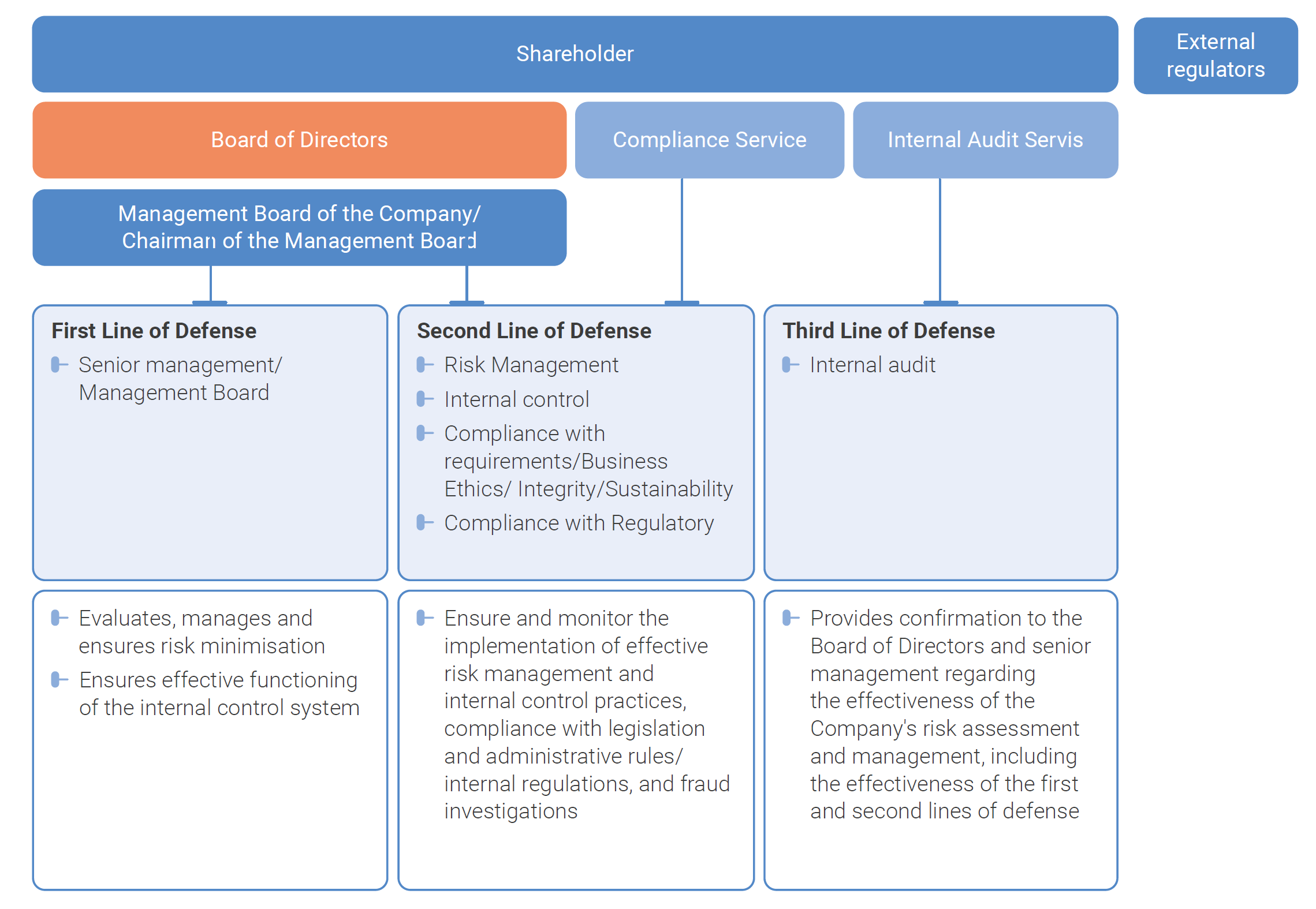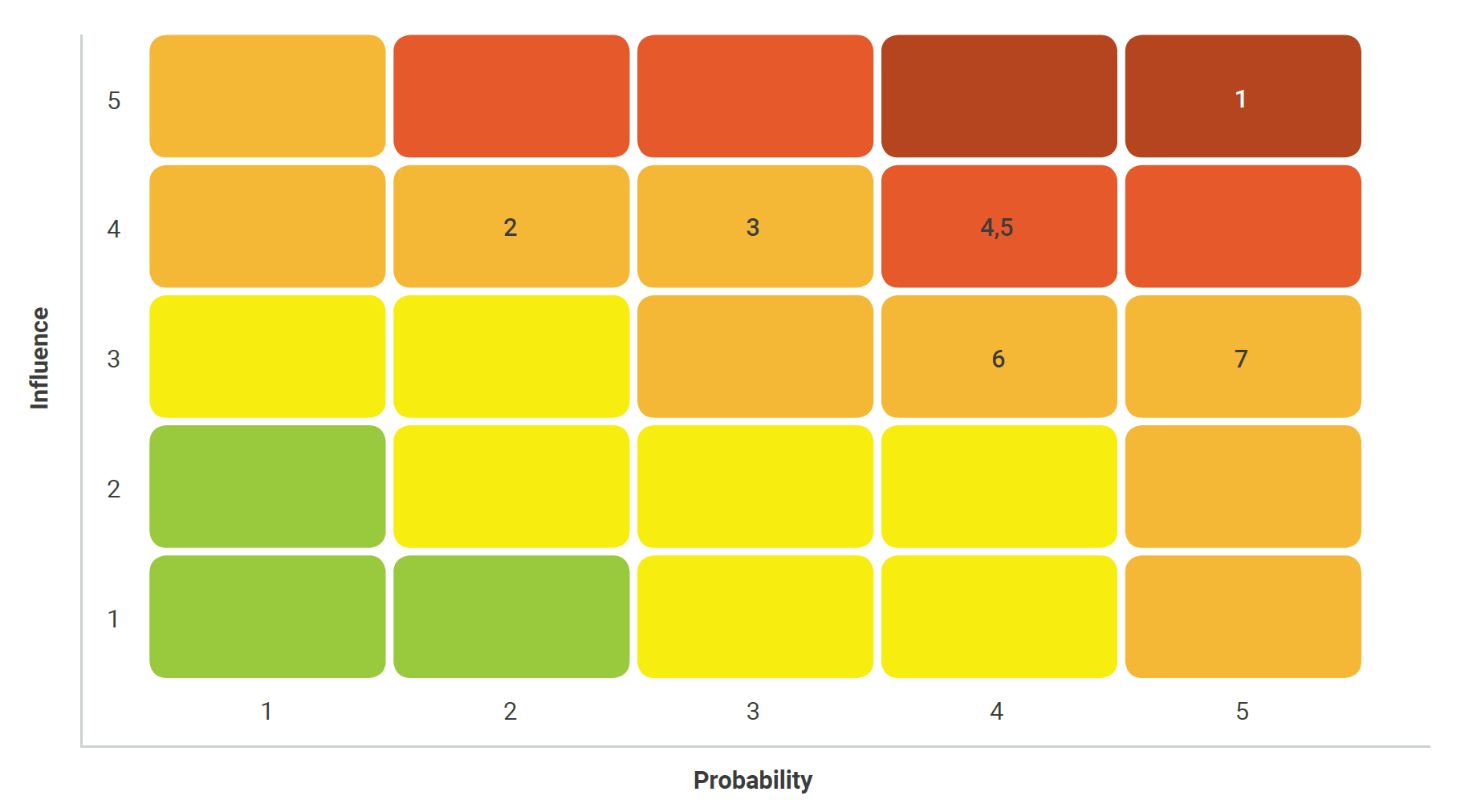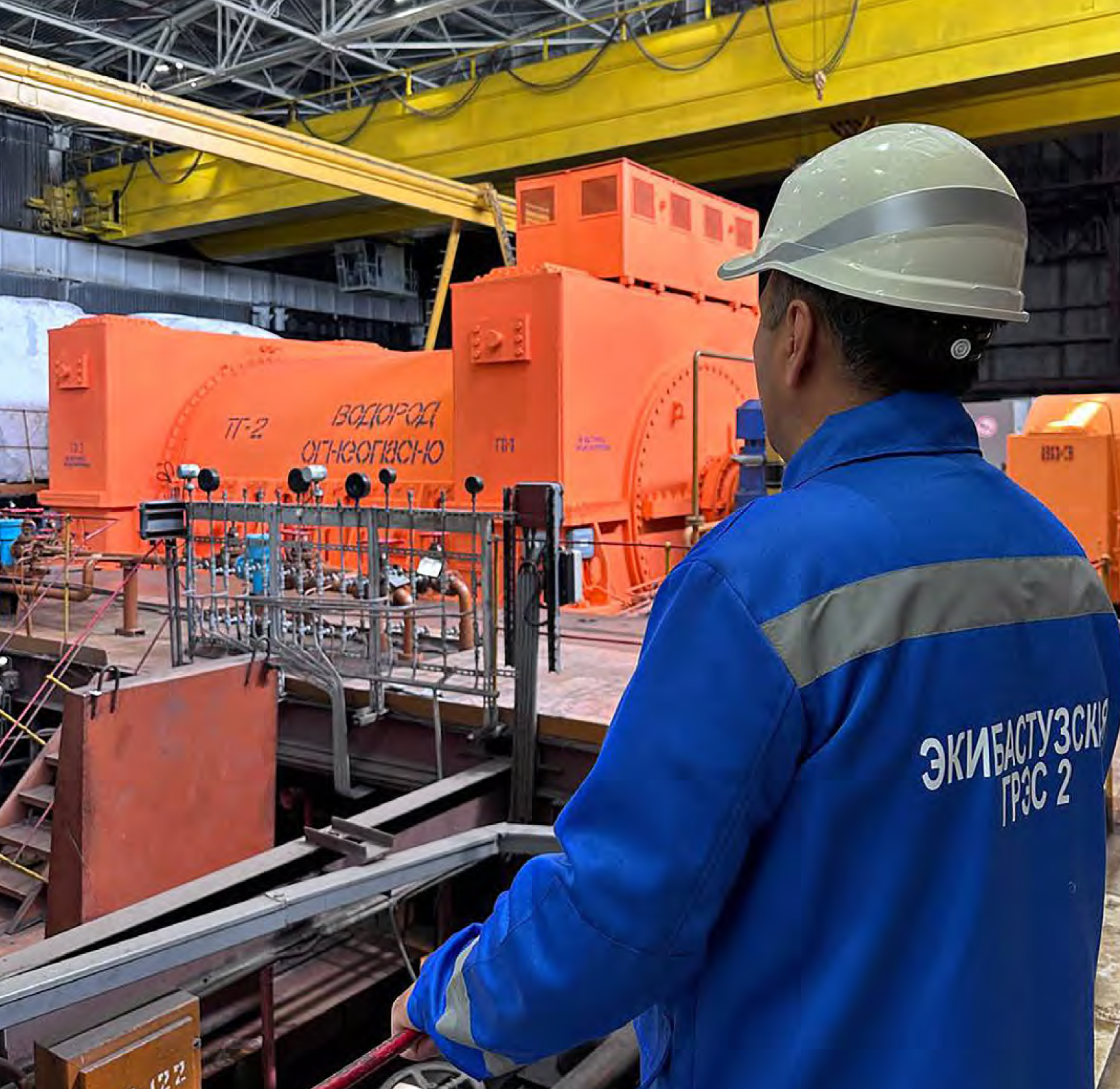Risk management and internal control
As part of the sustainable development strategy of Samruk-Energy JSC, effective risk management is an important element, enabling the Сompany to achieve its strategic goals and minimize potential threats. Risk management covers all aspects of the Сompany's activities, including environmental, social and economic components, as well as specific risks related to labour protection, corporate governance and legal aspects.
The Company adheres to international standards, including the COSO standard and the Three Lines of Defence model, which ensures a comprehensive approach to risk management. The risk management system is aimed at timely identification, assessment, management, monitoring and control of corporate risks. This process enables management to make riskbased decisions, adequately assessing their impact on the business in the short and long term. Modern risk analysis and management tools are used for effective control, which allows optimising business processes and making informed management decisions.
The main internal corporate documents reflecting the key principles and components of the risk management system and the functional responsibilities of risk management subjects include:
- Risk Management Policy in Samruk-Energy JSC
- Rules for identification and assessment of Samruk-Energy JSC risks
- Regulations on the Internal Control System of Samruk-Energy JSC
Risk management and internal control system

The Risk Register and Risk Map for 2024 include 33 risks (detailed description on pp. 56–61). In 2024, as part of the implementation of the Roadmap for Improving the Sustainable Development Management System, an expanded identification and assessment of sustainable development risks was carried out. Special attention was paid to environmental, physical and transient climate risks, which were included in the consolidated Risk Register for 2025, namely:
| Name of key risk | Description of possible consequences of the risk realisation |
|---|---|
| Climatic physical risks |
|
| Climate Transition Risks |
|
| Environmental Risks |
|
For each of these risks, measures have been developed to manage them, taking into account possible consequences. The risk management system makes it possible to minimise the negative impact on the Сompany and guarantee high results at all management levels.
Internal control system and business continuity management
The organisation of the internal control system ensures control over core and auxiliary business processes, as well as effective response to risks. The system is oriented towards promptly informing management of significant deficiencies and areas for improvement, which contributes to increasing the transparency and sustainability of the Сompany's processes. Importantly, the Сompany's business continuity management system complies with international standards and provides for regular monitoring and testing of business continuity and recovery plans.
In 2025, the Risk Management and Internal Control department will continue to improve the system, with a focus on supporting subsidiaries and affiliates to enhance their risk resilience and ensure comprehensive continuity management.
Risk appetite and risk monitoring
The Board of Directors has set the Сompany's risk appetite, which includes restrictions on key activities. This allows for effective risk management and timely risk mitigation measures. The Сompany's risk appetite is regularly monitored and updated quarterly to reflect changes in the external environment and business realities.
Risk management action plan
We annually develop and submit to the Board of Directors for review and approval – Risk Register, Risk Map, Key Risk Indicators (KRIs) and Key Risk Management Action Plan.
As a result of the risk identification work carried out by the Samruk-Energy JSC Group of companies in 2024, 33 risks inherent to the Company's activity were identified and assessed, KPI thresholds were updated, risk factors and mitigation measures were updated by risk owners.
Based on the reassessment results, seven risks were included in the key zone of the Risk Map of Samruk- Energy JSC companies for 2024 (9 key risks in 2023).
Risk map of the Samruk-Energy JSC Group of companies for 2024 (Key risks)

- Risk of damage to health and life of employees in the course of fulfilment of their duties, industrial accidents
- Risk of accidents and disasters at work
- Climate risks
- Risks of ongoing/prospective investment projects and investment programmes of subsidiaries and affiliates
- Risk of asset impairment
- Credit risk of counterparty banks
- Interest rate risk
Risks of Samruk-Energy JSC and risk management measures
| Description of possible consequences of the risk realisation | Major changes | Implemented risk management measures |
|---|---|---|
| Risk of damage to health and life of employees in the course of fulfilment of their duties, industrial accidents | ||
|
No change |
|
| Risk of accidents and disasters at work | ||
|
No change |
|
| Climate risks | ||
|
No change |
|

